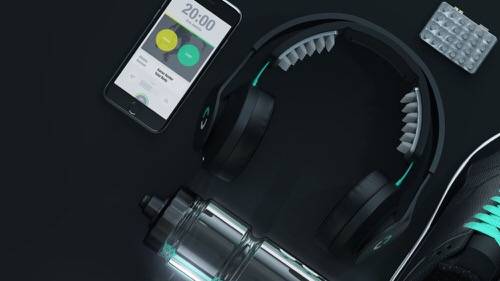In the era of the quantified self we are able to use a range of trackers and monitors within the Internet of Things (IoT) to assess and monitor our health throughout each day and night. But a small suite of companies like Thync and Fisher Wallace Laboratories have extended this reach to the use of wearables to transform the capabilities of the brain to manage conditions like mild fatigue, depression and insomnia.
The latest device comes from Halo Neuro, a headset called Halo Sport, targeting athletes that resembles headphones and uses what it calls neuro-priming – another term for transcranial direct current stimulation which involves the use of electrical pulses to encourage the brain to form new pathways to increase performance. It’s an approach that comes deeply steeped in scientific research. Halo Neuro consists of a team of 20 with impressive credentials, half of which are engineers, the rest doctors and neuroscientists.
I recently spoke to Halo’s co-founder and CEO, Dr. Daniel Chao, about how Halo Sport works and the impetus for the latest wearable.
He explained some of their background research around neuro-priming which involved double-blind, controlled experiments with 1,000 people to determine efficacy and safety:
“A lot of people ask us how we got to the athletic market, certainly not an obvious place for a bunch of neuroscientists to fall into, it was really the data that led us there. In our first year of operation we didn’t think about products or markets, our goal was to generate data from the thousand people and to really let to data drive us to our first market and our first product.We were informed by the published literature and our own results regarding the stimulation of the motor cortex. Only after generating the data did we start to think who would be interested in a motor cortex stimulator. The motor cortex controls movement so the natural affinity was athletes.We starting collaborating with different athletic organizations to test our systems in their population of people, firstly college students and then taking it up the chain to professional Olympic athlete level. We continued to see results at that level.”
Halo Sport brings results for U.S. ski team
The results are impressive. On average Halo is shown to increase learning by 50% and overall performance by 10%. The United States Olympic Ski & Snowboard association used Halo and saw a 1.7X increase in performance with their athletes.
Pro athletes everywhere from the NFL‘s combine to MLB teams are using Halo to improve their game. Halo released a limited run of their consumer headsets shipping this fall and they are gearing up to announce a general availability preorder date this fall.
In the first instance the pool of elite athletes seem an odd focus, given the size of the pool – particularly as Chao’s previous business, NeuroPace, developed an FDA-approved implantable brain stimulator for epilepsy.
Dr. Chao explained that the minutiae of improvement in elite sports is why they were the perfect people:
“In elite athletes, 1-2% improvement is huge. For example, we’ve been doing some work with the US Ski Team. I was invited to do the World Championships and noticed that with any of these sports at the highest level, the difference between 1st and 2nd place – let alone 20th – is just a sliver”.
However Neuro Sport is not limited to athletes in their prime but can have benefits to even the amateur or enthusiastic athlete. I was curious to see if Dr. Chao had tested the headset on himself:
“I’ve used it probably 100 times. I’m an avid cyclist, and in my mid 40s, my personal record is very difficult to beat. These days it’s more about treading water than improving. There’s a hill north of San Francisco that is notorious for cycling enthusiasts and I beat my personal best by 15 seconds doing a fairly focused training plan. I was really proud of that.”
Halo is already working with some of the nation’s top hospitals on researching the use of their technology to accelerate the rate of recovery in stroke patients. The U.S. Military has accelerated pilot and sniper training by 50% with neurotechnology similar to Halo Sport. Further down the road, Halo plans to release a model to improve memory and hopefully aid Alzheimer’s patients.





















